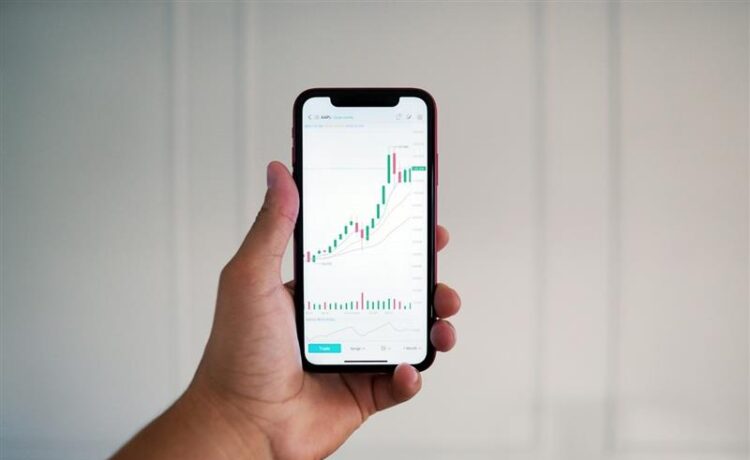Using a trading app can be a game-changer for anyone in Nigeria looking to make strategic currency trades.
Whether you are new to the forex market or have a fair bit of experience, you have probably come across automated indicators.
These powerful tools analyze price movements on your behalf, giving you signals that you can use to find potential entry and exit points.
While technology is rapidly advancing worldwide, it is particularly exciting for Nigerian traders who are ready to tap into the currency markets on both a local and international scale. Understanding how to incorporate automated indicators into your trading routine can help you make more precise currency trades with less stress. This article explores the benefits of automated indicators and guides you on how to use them effectively for better accuracy in your trades.
Choosing the Right Automated Indicators
Before you begin, it is important to select the indicators that align with your style and specific goals in the currency market. Some of the popular options include moving averages, relative strength index, and MACD, but many trading apps now offer even more specialized indicators tailored to currency trading. This is especially useful for traders who focus on pairs that include the naira.
When selecting indicators, consider your preferred timeframe and approach. If you like shorter-term trades, you might pick oscillators that offer quick signals. If you plan for longer-term trades, a trend-following indicator can help you filter out day-to-day noise. By choosing the right indicators, you allow the technology to work in harmony with your unique objectives.
Setting Up Automated Indicators in a Trading App
Once you have identified indicators that suit your style, the next step is to install and configure them in your chosen trading app. In Nigeria, the most reliable apps provide a streamlined user interface that helps even newcomers get started quickly.
You can usually search for the name of your chosen indicator, activate it, and then adjust its parameters. This might involve setting specific intervals, choosing which currency pairs to monitor, and deciding how alerts should be delivered to you.
For example, if you are more comfortable focusing on USDNGN or EURNGN pairs, you can zero in on those. It is crucial to tailor each indicator to your preference because the default settings are not always optimal for every trader. Once set up, the indicator will run automatically, scanning the market in real time and sending you signals based on the parameters you have defined.
Interpreting Signals for More Accurate Entries
Automated indicators can suggest where and when you might enter a currency trade, but human discretion plays a vital role in interpreting these signals correctly. You might receive a notification that the market is at an overbought level or that a crossover in moving averages suggests a bullish reversal.
These prompts should be cross-checked with additional forms of analysis, such as fundamental data. For instance, if the Central Bank of Nigeria announces a change in monetary policy, that could influence the naira’s performance against foreign currencies. By blending automated signals with the broader market context, you can refine your entries and time them with greater accuracy, which is critical in a fast-paced environment where the value of the naira can shift quickly.
Avoiding Over-Reliance on Tools
Automated indicators are convenient, but they should complement, not replace, your own analysis and market understanding. Some traders rely too heavily on these signals and forget that the foreign exchange market can be unpredictable.
Sudden political changes, global economic shifts, and local news can all cause sharp price movements. Relying solely on automation could lead to late or poorly informed decisions. A wiser approach for traders in Nigeria is to integrate these signals into a trading strategy that also takes into account risk management and regular reviews of current market conditions.
Fine-Tuning for Continued Growth
After you have put your indicators to work, it is a good idea to conduct periodic evaluations. You might discover that certain settings are more effective than others during specific market conditions. This is all part of fine-tuning your strategy. If you notice that an indicator consistently flags entry points too late, adjust the parameters to ensure you catch the trend earlier.
On the other hand, if you keep getting false signals, consider combining two or more indicators for confirmation. Over time, this iterative process will help you optimize your strategies and position you for more consistent results.
Conclusion
In Nigeria, where currency valuations often fluctuate, leveraging automated indicators in a trading app can give you a valuable edge in seeking profit opportunities. Whether you are just getting started or looking to sharpen your existing strategies, these tools make it easier to identify profitable entry points, particularly when blended with fundamental research and risk management practices.
Rather than removing the need for personal judgment, automated indicators serve as a guide, letting you test potential trades with data-driven insights. As you become more adept at fine-tuning these indicators and aligning them with your unique goals, you will discover that technology can significantly reduce guesswork and increase confidence in your trading journey. With dedication and the right tools, Nigerian traders can navigate the currency market more effectively, aiming for consistent growth in the dynamic financial landscape.

